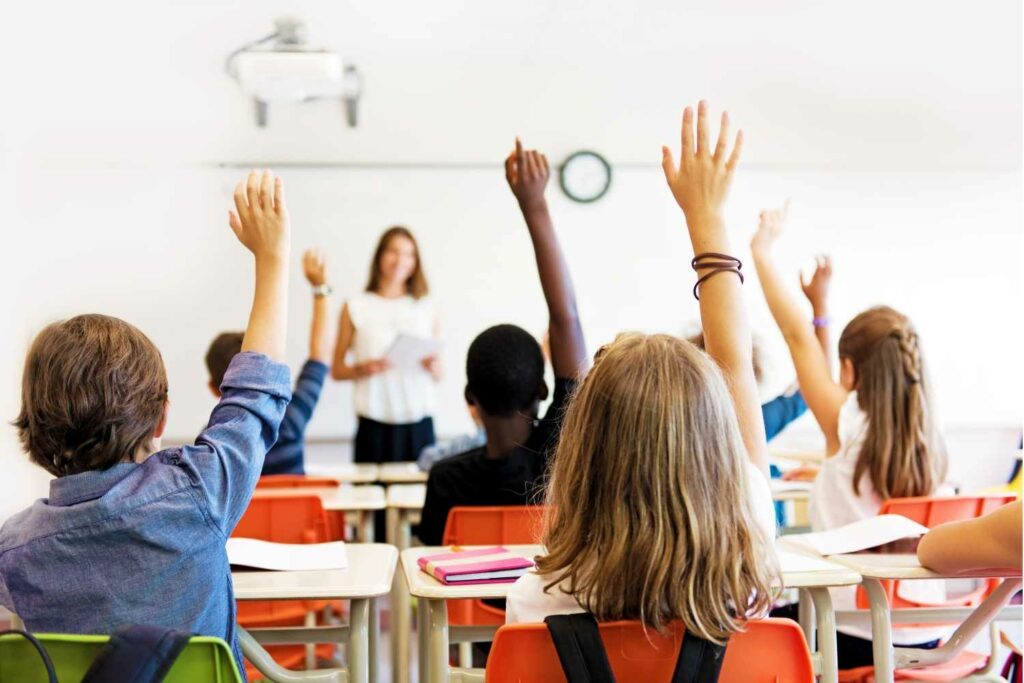The school classroom is relatively unchanged since its conception a few hundred years ago. A large space with several desks facing toward the teacher enables effective communication of key learnings.

The last couple of years have been some of the most challenging ever experienced by school systems across the globe. The mixture of teaching via the web, strict rules across the school, and the ongoing pressure within the classroom environment has been extremely taxing upon all those involved in providing the next generation with the best learning environment possible.
This for the most part has now rolled back significantly, but are we potentially missing out on some of the huge benefits to pupils and teachers that were seen from creating healthier classroom environments? Are we missing out on a better learning environment that was potentially created during these challenging times?
Were There Any Benefits?
Amongst the mask mandates and strict proximity rules there were some significant steps forward in the widespread adoption of trying to keep classrooms well-ventilated and exceptionally clean. These must be seen as a huge benefit, but sadly, we now seem for the most part to be going back to business as usual. This would be a massive lost opportunity.
Creating a healthier school environment has significant benefits for the health and wellness of all those within and has been shown to create productivity benefits in terms of brain function and attention span. To step away from this when it would now be relatively simple to implement seems enormously short-sighted.
What Is Being Done Around The World
Various initiatives have been implemented around the world with varying degrees of success. These vary from comprehensive technology upgrades and air purification technology to the more simple improvements in ventilation.
There has been some interesting data coming from Canada where a large-scale initiative was introduced to upgrade HVAC in British Columbia’s schools. The goal of this was to create better air quality within the schools but Bill Bahnfleth, a professor of architectural engineering at Penn State University and an air-quality expert, said in an interview “while B.C.’s efforts are praiseworthy, the information being provided to the public does not demonstrate whether schools are meeting minimum standards for air quality.”
So, Why Is The Well-Intentioned Strategy Not Working?
Bahnfleth said, “health officials across North America have been reluctant to include air-quality experts as advisers and that has led to out-of-date material being used to create health guidelines.”
So, in essence, a strategy has been implemented without the latest innovations and information being accounted for.
It is not just in Canada where there have been challenges. In the US there has been an extensive program to improve ventilation within schools and in many cases also install air purification systems.
What Has Been Happening In The UK
The UK school system reacted quickly to the perceived threat and imposed strict restrictions but since then has been rolling them back. Currently, there does not appear to be a coherent strategy implemented across the country with individual schools and regions deciding upon the best approach.
This has some significant flaws since well-meaning plans could have similar negative effects on the large-scale roll-out as in Canada. Without the guidance of air quality and healthy space experts, plans will likely miss key issues.
What Can Be Done
The biggest problem right now is with the huge variety of different teaching spaces. It is not possible to understand what the problems are in any given classroom. Therefore, knowing what needs to be done to make the space healthier and more productive is complex. To address this, we need to first understand what is happening and then we can put forward the right technology and workflow to effectively manage and keep classrooms at their healthiest.
What Technology Does This?
There are several technologies out there that can monitor environments and several that can look at the hygiene of surfaces. Some technologies can purify the air to reduce the risk of contaminants and bacteria. These are all significant steps in the right direction and will undoubtedly make a difference compared to returning to how classrooms were previously.
This will only be half the solution. To create a long-term solution, there needs to be a way of understanding the available information and then positioning this at the right time with the right people so that suitable steps can be taken to improve the health of the space.

Introducing INVZBL-Envelo
With INVZBL-Envelo, we are passionate about understanding the underlying information and then implementing the right workflow for the right people. Imagine a school where all of the classrooms are constantly monitored, and actions are undertaken by the onsite team to constantly ensure that risks are kept to a minimum and the classroom environment is optimal for learning.
This is what INVZBL-Envelo can and already is bringing to schools, the ability to create healthy classroom environments where the school can effectively manage any ongoing risk.
What Is The Future?
Who knows what will happen over the next 6-12 months? Fingers crossed that the challenges from the pandemic are now significantly reducing and will stay that way. It appears that Covid has now moved into more of an operational challenge rather than a large-scale health one which indicates that the right precautions should enable effective management.
But what is the future for technology around healthy spaces? In short, the future is going to be the ability to predict issues before they occur. The ability to create long-term healthy classroom environments that improve the overall wellness of teachers and students along with their productivity.
This article originally published on our partner webpage at https://envelo.solutions/school-classrooms-are-we-just-back-to-business-as-usual/


